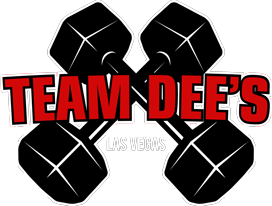If you’ve recently ramped up your gym sessions or taken on a new training program, you may be wondering – is it normal to feel soreness in your muscles for days after your workout? Some muscle aches and stiffness is common after exercise, but how can you tell what’s normal from potential injury? We’ve got answers from your reliable Las Vegas personal trainer, Team Dee’s.
Post-Workout Muscle Aches – Friend Or Foe?
Post-workout muscle aches, scientifically referred to as Delayed Onset Muscle Soreness (DOMS), are the discomfort or pain you feel in your muscles several hours to days after intense physical activity, especially a new exercise regimen.
- DOMS is normal and typically occurs when you start a new physical activity program, increase your exercise intensity, or alter your exercise routine.
- The soreness is felt in the muscles that were worked during the exercise, not the joints.
- The discomfort usually peaks between 24 to 72 hours after the exercise.
The Science Behind DOMS
When you exercise, especially during high-intensity workouts commonly associated with bodybuilding routines, you create microscopic tears in your muscle fibers. These micro-tears spur the muscle healing and strengthening process.
- Your body responds to these micro-tears by increasing inflammation in that muscle group, which leads to soreness.
- DOMS is also a side product of your muscle’s adaptation process to better prepare for similar stress in the future.
- Believed by some as a sign of an effective workout, DOMS does not necessarily indicate muscle growth.
Is Lactic Acid Buildup Really What Causes Muscle Soreness?
Contrary to popular belief, lactic acid buildup is not the primary cause of muscle soreness. It is a byproduct of intense exercise but is quickly cleared from the muscles. DOMS is more closely associated with microscopic muscle damage and inflammation.
Types Of Muscle Soreness
There are two main types of muscle soreness stemming from different causes. Acute muscle soreness is immediate discomfort during or immediately after exercise and typically dissipates quickly. On the other hand, DOMS manifests 24-72 hours post-exercise. While acute soreness is normal, DOMS may require additional recovery strategies.
- Acute Soreness – Occurs during and immediately after working out. Caused by microscopic tears to muscle fibers (microtrauma) as you strain and contract them. Subsides within 24 hours.
- Delayed Onset Muscle Soreness (DOMS) – Deep muscle ache starting 24-48 hours after exercise, peaking around 72 hours, and subsiding after 5-7 days. Caused by inflammation triggered by microtrauma from challenging and unfamiliar movements. DOMS signals your body adapting to new stressors.
The Soreness Spectrum: When To Worry
While post-workout muscle aches are normal, distinguishing them from potential injuries is crucial. So, how do you tell the difference between a temporary twinge and something more serious? Listen to your body!
Green Zone (Go Team Soreness!):
- Mild discomfort that fades within a few days.
- Improved range of motion after a gentle warm-up.
- No swelling, bruising, or sharp pain.
Yellow Zone (Caution Tape Ahead):
- Soreness that lingers for more than 72 hours.
- Decreased range of motion or weakness.
- Localized pain, swelling, or bruising.
Red Zone (Stop! Drop & Call The Doc):
- Sudden, sharp pain during or after exercise.
- Joint pain or instability.
- Numbness or tingling in the affected area.
Addressing Post-Workout Soreness
Combatting post-workout soreness involves a multi-faceted approach. Adequate nutrition, proper hydration, and strategic recovery techniques such as sports massage and foam rolling can significantly alleviate sore muscles. There are several strategies that a seasoned IFBB Pro would suggest to alleviate DOMS and expedite recovery.
- Light activity increases blood flow to enhance recovery.
- Foam rollers and massage help decrease muscle tightness and swelling.
- Cold therapy constricts blood vessels to reduce inflammation.
- Heat therapy boosts blood flow to clear waste products.
- Hydration and electrolytes help rebuild and repair muscle tissue.
- Protein and carbohydrates provide fuel for recovery.
- Sleep gives your body time to adapt and get stronger.
Get Smart With Your Workouts
Prevention, they say, is better than cure. Here are a few recommendations from IFBB pros to aid in minimizing the impact of DOMS. It all starts with a well-rounded approach to fitness. Ensure you’re warming up properly before each session, gradually increasing intensity, and incorporating active recovery techniques.
- Gradually increase the intensity of your workouts.
- Practice good workout techniques and maintain proper form.
- Incorporate warm-ups and cool-downs into your workout routine.
A qualified bodybuilding trainer can customize your workout plan to gradually increase intensity, incorporate effective warm-up and cooldown routines, and provide guidance on optimal nutrition and recovery strategies.
Looking Forward: Turning Pain Into Gain
Proper management of post-workout discomfort can help you maintain your commitment to a healthy bodybuilding regimen without derailing your goals due to unbearable aches and pains. As your body adapts to your fitness routine, the frequency and intensity of post-workout soreness will diminish. Consistency in your workouts, combined with proper recovery, is the key to a pain-free and fulfilling fitness journey.
Exercise Expertise At The Heart Of Sin City
Conquer your bodybuilding competitions and fitness goals and overcome post-workout aches with leading fitness expert, Team Dee’s. Train with an IFBB Pro in the heart of Vegas Valley, and let’s turn that pain into unbeatable strength and form. Embrace the burn, take control of your recovery, and ascend to the next level of your bodybuilding journey with us. Don’t miss this chance to revamp your workout strategy at the epicenter of The Strip! Your first-class physique awaits you here in Las Vegas. Schedule a consultation today.
